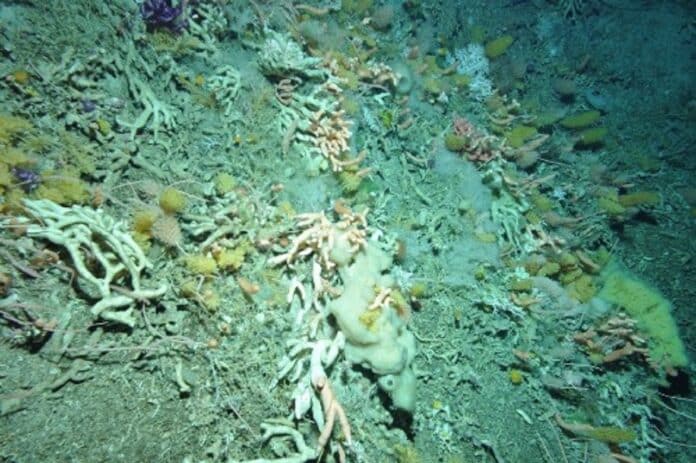A study led by the University of Bristol and Nanjing University in China has called into question the idea that ocean currents caused rising global carbon dioxide levels in the atmosphere over the last 11,000 years.
The new study examined deep-sea corals from the past to shed light on ocean chemistry’s evolution. The Holocene period, which runs from 11,700 years ago to the present, is the Earth‘s most recent interglacial period and has intrigued scientists investigating the planet’s recent climate history.
One idea argues that changes in high-latitude ocean circulation, or the physical upwelling of carbon-rich deep waters to the surface of the Southern Ocean, may have driven the release of marine carbon into the atmosphere, though this is only partially understood.
Lead author Tianyu Chen, Professor of Marine Geochemistry at Nanjing University and the University of Bristol, said: “Our research challenges assumptions about the role of ocean circulation in the carbon cycle during the Holocene. By providing radiocarbon evidence for the stability of these processes, we pave the way for a deeper understanding of the complex interactions between the ocean and the Earth’s climate system.”
The rise in atmospheric CO2 levels is an essential feature of this time period. In the early Holocene, CO2 levels were initially at 260 parts per million by volume (ppmv). However, over approximately 5,000 years, they grew by 20 ppmv, comparable to around 150 gigatonnes of CO2.
Corals, extraordinary species, have thrived on seamounts during the Holocene. The worldwide team of experts precisely dated deep water coral data from this period from the Drake Passage, which connects South America and Antarctica, and the Reykjanes Ridge, which is located south of Iceland.
These corals can be found up to 1,900 meters in Antarctic circumpolar waters and the North Atlantic Deep Water. Surprisingly, radiocarbon data indicated that ventilation in Antarctic circumpolar waters and the North Atlantic Deep Water remained remarkably steady.
The findings published today in Nature Geoscience show that long-term polar ocean mixing between the surface and deep water has remained relatively stable. As a result, the North Atlantic and Southern Ocean circulation did not alone cause the rise in atmospheric CO2 levels over the Holocene. Instead, the researchers believe that biogeochemical cycles that move nutrients and carbon in the ocean and on land may have contributed to the rise.
Co-author Dr. Joseph Stewart, Research Fellow in Geochemistry at the University of Bristol, said: “Thanks to the decay of radioactive isotopes within their skeletons, deep-sea corals effectively contain two ‘clocks.’ Trace amounts of uranium-238 within the corals gradually decay to thorium-230, allowing us to accurately assess their age by measuring this isotope ratio.”
He said, “The second clock, radiocarbon (carbon-14), also slowly decays away. However, it predominantly enters the oceans via the atmosphere. Therefore, the radiocarbon content of corals tells us how long radiocarbon-depleted deep waters have been out of contact with radiocarbon-rich surface waters. By using both ‘clocks’ together, we could assess the ocean ventilation rates during this key interval.”
The study is an important step forward in understanding the link between ocean circulation, carbon cycling, and Holocene climate dynamics. To completely comprehend the Holocene atmosphere’s carbon budget, a future comprehensive understanding of natural and human-induced fluctuations in the carbon cycle will be required.
Co-author Laura Robinson, Professor of Geochemistry at the University of Bristol, added: “These findings contribute to the growing body of knowledge in this field and underscore the importance of further exploring the mechanism that decouples the biogeochemical cycle and physical ocean circulation during the Holocene.”
Journal Reference:
- Chen, T., Laura Robinson, et al . Radiocarbon evidence for the stability of polar ocean overturning during the Holocene. Nature Geoscience. DOI: 10.1038/s41561-023-01214-2
